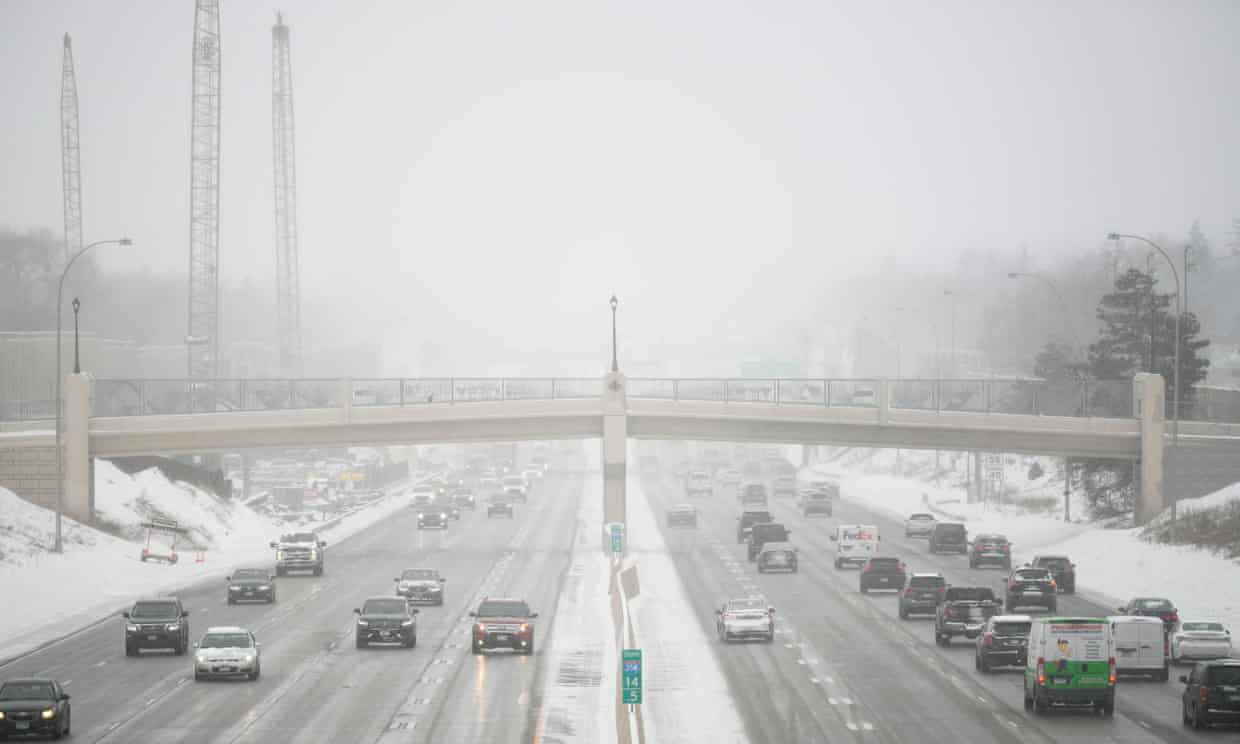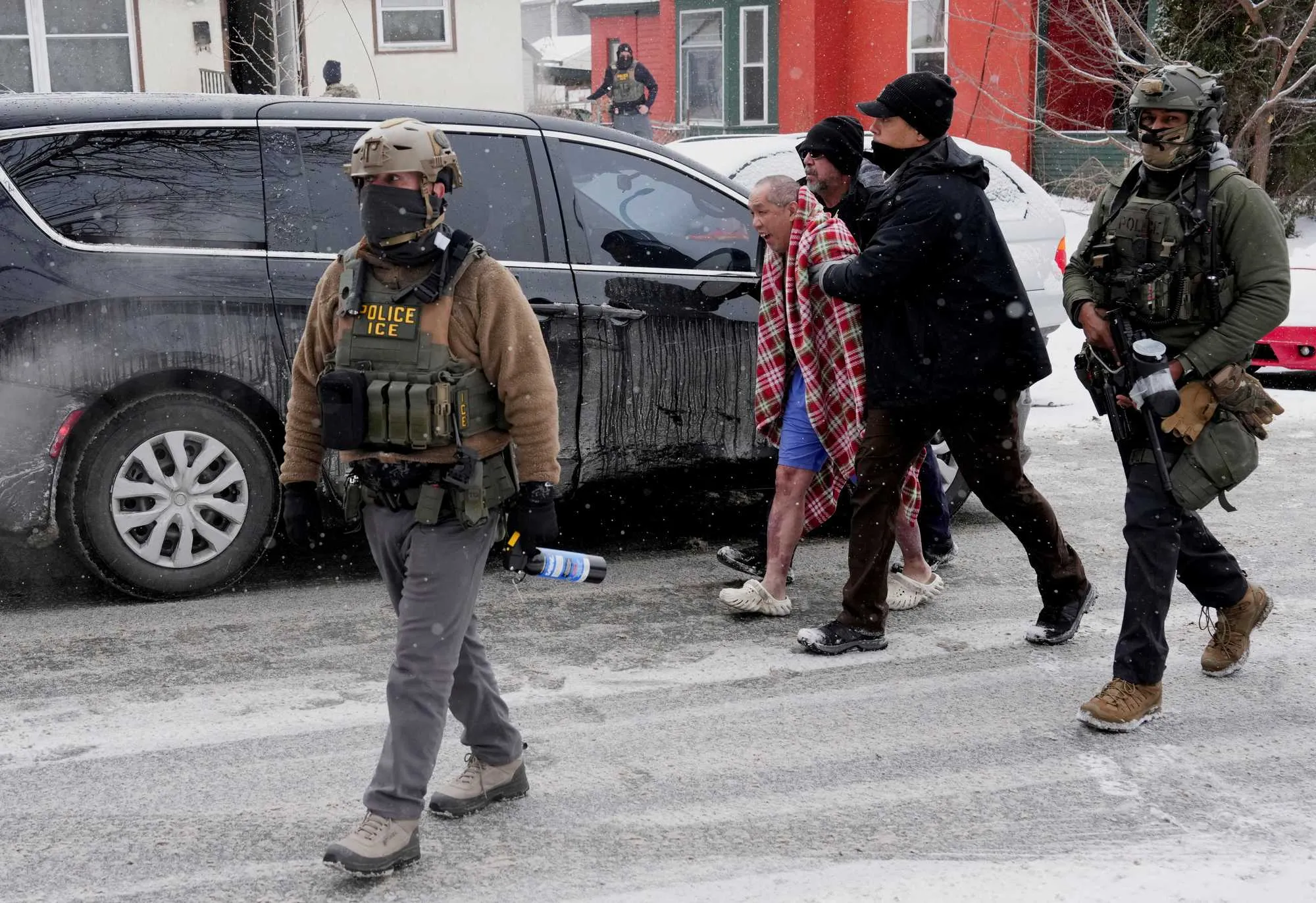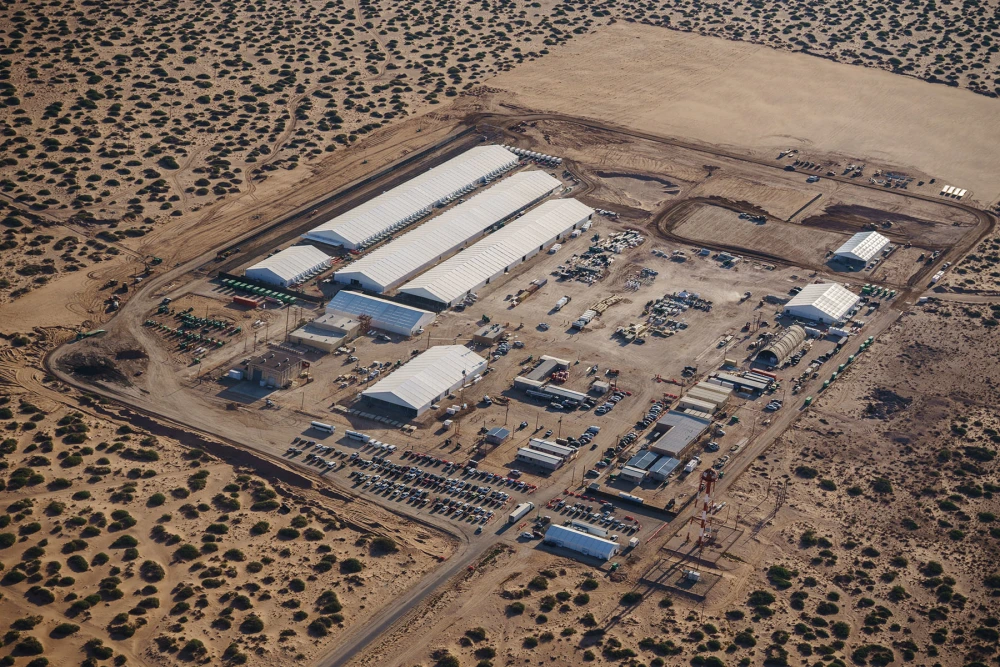Firefighter killed in Michigan by power line, while 13 million people under winter weather advisories across the country
Nearly a million people across the US were without power on Thursday afternoon as a powerful winter storm brought bitter cold, stirred up gusty winds and pounded several states with blizzard conditions from coast to coast.
Michigan bore the brunt of power outages on Thursday with more than 820,000 homes and businesses left cold into the evening, as the state faced one of the worst ice storms seen in decades. DTE, one of the largest power providers in the state, reported “extreme amounts of damage” to power infrastructure after ice roughly three-quarters of an inch thick accumulated in some areas.
“That’s a level we haven’t seen in nearly 50 years,” Matt Paul, executive vice-president of distribution operations at DTE said in a press briefing on Thursday morning, adding that the extreme weather downed more than 2,000 power lines and caused utility poles to snap.
It is unclear how quickly the dangerous situation can be addressed. Along with the perils of exposure posed on those left without essential energy resources during the storms, the downed lines create hazards all on their own.
Lt Ethan Quillen, a 28-year-old firefighter with the Paw Paw Volunteer Fire Department, was killed after being struck by live wires as he responded to a call Wednesday evening, Michigan state police officials said in a press briefing.
The dangerous storm system has prompted the National Weather Service to issue winter weather advisories to swaths of the country, covering areas where more than 13 million people live. Temperatures are expected to drop up to 40F below average across several regions of the US, leaving many areas, especially in the high plains, bracing for sub-zero conditions, travel hazards and more power outages.
“A prolonged major winter storm will continue to bring widespread heavy snow and blizzard conditions to portions of the west as well as the northern Plains/Great Lakes,” the NWS warned in a forecast Thursday morning, adding that the storm could produce up to 2in of snow per hour with winds as high as 50mph “to drive significant impacts that will include major disruptions to travel, infrastructure, livestock and recreation”.
Few places will be untouched by wild weather. As the north plunges into bitter cold, stretches across the south will see record heat with temperatures pushing past 80F. Already, long-standing record high temperatures have been broken in the midwest, mid-Atlantic and south-east.
To the west, the storm also dumped snow across California and prompted the first blizzard warnings in decades for the mountainous areas of Los Angeles, Ventura and Santa Barbara counties that will last into Saturday afternoon.
By Thursday morning, snowfall had reached sea level in the northern part of the state, as the hills in the San Francisco Bay Area were dusted in white and snow piled across the Santa Cruz Mountains lining the coast. Snowflakes were even spotted falling over the famous Hollywood Sign, tucked above the hills overlooking Los Angeles. According to forecasters, there’s more wintery weather to come into the weekend.
“A lot of folks will see snow from this event who haven’t seen it in a long time,” climate scientist Daniel Swain said in a YouTube discussion on Thursday morning, noting that nearly every Californian would be able to spot the phenomenon accumulating on hillsides and mountains.
To the north, in Portland, Oregon, cars littered highways as snow blanketed the Pacific north-west prompting more than 20 street closures and major traffic delays. Transportation officials urged residents to remain at home as snowplows were deployed to clear emergency routes through the city.
The brutal conditions also closed highways from Arizona to Wyoming on Wednesday, trapping drivers in cars, closing schools and offices and even shutting down the Minnesota legislature. Weather contributed to more than 1,600 flight cancellations, according to the tracking service FlightAware.
In Wyoming, rescuers tried to reach stranded vehicles but high winds and drifting snow created a “near-impossible situation”, said Sgt Jeremy Beck of the Wyoming highway patrol.
The state transportation department said roads across much of the south of the state were impassable.
The storm will move east toward the end of the week, covering the Great Lakes and north-east in more than a foot of snow – as high as 18in in some areas, according to the NWS. Dangers from power outages will linger, “especially for the locations seeing a combination of stronger winds and accumulating ice”, the agency reported.
A separate storm system, brewing off the west coast, is also expected to hit California at the end of the week. “The heavy snowfall threat across the west should become more centered over California,” the NWS said, adding that the risk of flash floods across southern California will rise into the weekend. “Multiple rounds of new snowfall should accumulate to as much as 3 to 5ft for the Sierra Nevada, with locally heavier totals for the highest peaks.”
on
I hope you appreciated this article. Before you move on, I was hoping you would consider taking the step of supporting the Guardian’s journalism.
From Elon Musk to Rupert Murdoch, a small number of billionaire owners have a powerful hold on so much of the information that reaches the public about what’s happening in the world. The Guardian is different. We have no billionaire owner or shareholders to consider. Our journalism is produced to serve the public interest – not profit motives.
And we avoid the trap that befalls much US media – the tendency, born of a desire to please all sides, to engage in false equivalence in the name of neutrality. While fairness guides everything we do, we know there is a right and a wrong position in the fight against racism and for reproductive justice. When we report on issues like the climate crisis, we’re not afraid to name who is responsible. And as a global news organization, we’re able to provide a fresh, outsider perspective on US politics – one so often missing from the insular American media bubble.
Around the world, readers can access the Guardian’s paywall-free journalism because of our unique reader-supported model. That’s because of people like you. Our readers keep us independent, beholden to no outside influence and accessible to everyone – whether they can afford to pay for news, or not.
Theguardian
Tags:million




